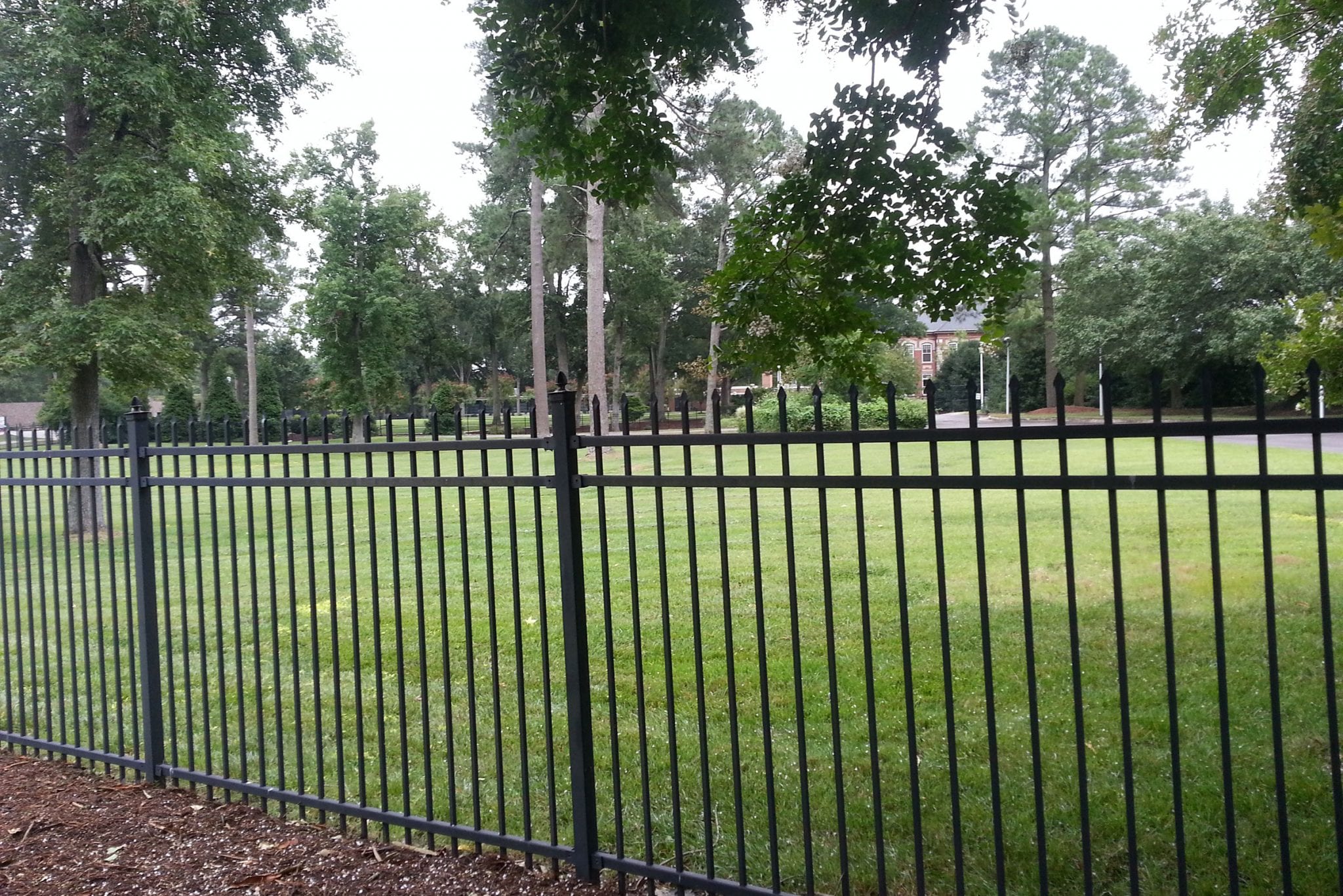When you have a large property and plenty of land, it’s much easier to install a fence and make it look great. But when your space is limited, you need to be a little more creative to make it work without making your family feel cramped or trapped.
Fencing tends to reduce space, both physically and in our minds. Even thought fences are relatively thin, if they are tall and opaque, it can feel like they occupy more room than they truly do.
To fix this issue and still give you the protection and privacy that you desire we have to get creative about the materials that are used, the height of the fence and potentially even the color.
Let the Light In
Opaque fencing like most vinyl or wood fences will block out the light completely. While this has the advantage of giving you extra privacy by preventing people from seeing through, it can also make you feel trapped.
When there is no light coming through the fence the yard will be darker which can make it feel smaller than it is. This theory is why home designers use white walls instead of dark colors in small homes to make them feel bigger.
To let more light come through you can opt for wrought iron or chainlink fence which has gaps and therefore will hardly prohibit the light at all. However, if you want the added privacy, you might consider a middle point, opting for a vinyl fence with gaps rather than large solid sections.
Either of these three options will solve the issue, letting more light in which makes the space more enjoyable but also prevents it from seeming smaller than it already is.
Opt for Shorter Fencing
Feeling enclosed or trapped isn’t just a case of the light coming in, the height of the fencing also impacts it. To reduce this feeling and make your yard feel larger, you can minimize the height of the fencing.
You may not be able to go low if you have pets or young children, choosing a 4 foot instead of a 6-foot fence will make a difference to the feeling of the yard.
Choose a Lighter Color

The color of the fencing matters, a lot. On small properties, you’ll often see lighter colored fences in whites, greens, browns and gray. Dark colors such as a deep brown, black or navy will make space feel tight.
A white or light gray that reflects much of the sunlight will feel far larger than it truly is, especially if it’s not entirely opaque.
Sectional Changes
A common misconception is that all of your fencings must be identical. Truthfully, you can change not only the material but the height of the fence at different points around the home. For a petite house, this can be particularly useful because you might need a large opaque fence in the rear for privacy, but on the sides and front, you could choose a shorter non-opaque material.
Changing materials can make the aesthetic less cookie-cutter, giving you some individuality and therefore a more luxurious style. But practically it can also allow you to make the most of your space and to avoid feeling trapped in at points where it’s not needed.
You can either have an abrupt material and height change or taper it down by slowly reducing the height of the fence down to a lower level. Both can look great and achieve the goal of opening up the area and making the most of the space.
Stay Inline with the House
When you are deciding where to locate the fence line, you might consider keeping in line with the house, especially at the front of the home. While this might seem counterintuitive because you reduce the size of the section, it allows you a wider space down the side of your home which can help with practical tasks like bringing in large items.

